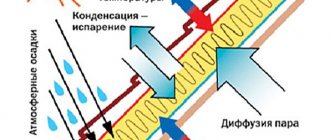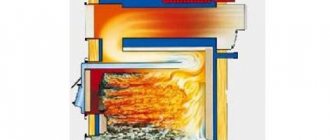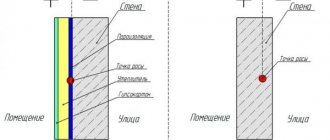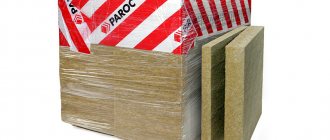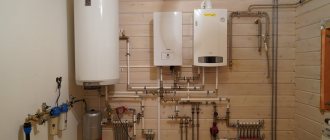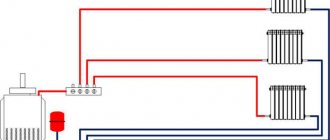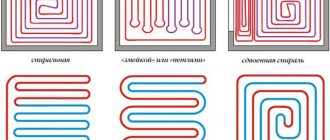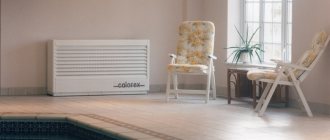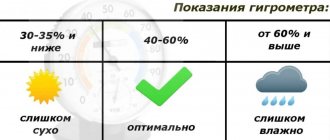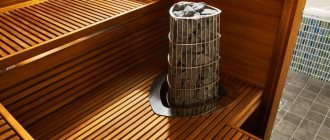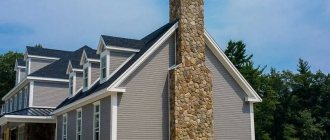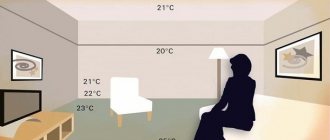Wind and waterproof membrane Izospan advantages
The peculiarity of this material is that it has good thermal insulation characteristics, which make it possible to provide a high level of protection of any buildings from negative factors such as wind and moisture.
The windproof membrane eliminates the possibility of high humidity in attics. This is ensured due to the presence of high heat-reflecting properties in the Izospan material, which provide protection against condensation. When installing a vapor-permeable membrane, connecting tapes are used, which ensures high tightness of the fastening. In addition, the material provides a high degree of wind protection for the building.
Currently, windproof membranes are widely used. It is used when carrying out internal and external work on thermal insulation of floors and walls. A windproof membrane is also used when solving problems of insulating floors. The use of this material protects structures from condensation and prevents damage to the finish.
When working on flooring, the Izospan windproof membrane is often used as a floor substrate. The use of this material for this purpose provides good reflection of infrared rays, which direct the heat flow directly into the room. In addition, good wind protection is provided.
When using the Izospan moisture-proof membrane, reliable protection is provided against:
- exposure to high humidity;
- occurrence of condensation;
- wind entering the premises.
Thanks to the functional aspects that are characteristic of the Izospan windproof membrane, it is possible to significantly reduce the temperature load affecting any building under conditions of temperature changes. The use of a windproof membrane as a moisture-proof material provides protection:
- roofs;
- walls and interfloor ceilings;
- floor.
The use of vapor-permeable material allows you to create favorable conditions for living in a house that has high-quality insulation. Note that windproof material is used to make special suits, which keep the person wearing such clothing dry in rainy weather and are well protected from the wind.
A membrane from well-known manufacturers that provides reliable wind protection, which is available in a large assortment on the market, is characterized by:
- good wind protection of roofing systems;
- reliable vapor barrier for walls and ceilings;
- connecting material joints using sealed tapes.
Features of the use of different types of wind protection
In addition to diffuse membranes, in practice, rigid insulation options , for example: OSB, fiberboards and Isoplan panels. Let's consider the pros and cons of each type of wind protection, and note the specifics of their application.
Using OSB: arguments for and against
Covering the external walls of a frame house with OSB boards solves several problems. Rigid slabs provide the basis for subsequent cladding and provide effective wind protection.
Advantages of the material:
- providing additional heat and sound insulation;
- strength – OSB perfectly holds back wind gusts;
- sufficient vapor barrier;
- environmental friendliness.
However, OSB does not tolerate a humid environment and needs additional waterproofing . In addition, rigid oriented strand boards tend to change linear dimensions with temperature changes. The result is the formation of gaps between the cladding panels and the walls being blown through.
Some people suggest covering the slabs with plastic film for waterproofing OSB. But such a solution negates the vapor permeability of the substrate, and is fraught with undesirable consequences: wetting of the insulation, deterioration of the microclimate in the house - increased humidity, the appearance of dampness.
Useful: Block house and imitation timber in the exterior decoration of a house
Isoplat – insulation and wind protection
Isoplat is a sheet material made from coniferous wood. No glue is used to press the fibers - molding into slabs occurs due to the softening of the natural polymer.
Characteristics of Isoplat:
- high thermal conductivity – 0.045 W/(m*k);
- moisture resistance due to treatment of the outside with paraffin;
- the fibrous structure ensures good vapor permeability;
- soundproofing ability – reducing the noise effect by 23-26 dB;
- high density – 230-270 kg/cub.m;
- environmental friendliness, biostability and relative fire safety - when a fire occurs, the material is charred, and the resulting ash blocks the access of air to the wooden frame;
- ease of installation and tight joining of windproof boards due to tongue-and-groove fixation.
The main disadvantage of Isoplat is the significant financial costs of installing wind protection for a frame house. Despite the declared moisture resistance, manufacturers do not recommend leaving the sheets open for a long time. Excessive wetting can lead to a change in the geometry of the Isoplat - the material is taken in “waves”.
Windproofing qualities of fiberboard slabs
The material consists of 50-60% wood fibers, the rest is Portland cement and various additives. This structure endowed the slabs with a number of positive characteristics:
- high water resistance along with vapor permeability - fiberboard slabs “breathe”, maintaining a favorable microclimate, and are not afraid of humidity;
- fire safety - the material tolerates high temperatures and does not emit toxic substances when burned;
- low thermal conductivity – wood-cement sheets reduce heat losses in the room.
An additional plus is strength, the density of fiberboard is 250-1050 kg/cub.m. The slabs provide reliable protection of the frame from adverse external factors, including gusts of wind. In addition, the material is easy to process; it can be milled and sawed. Fiberboard is a good basis for finishing: plastering the facade or attaching siding.
Many experts consider fiberboard sheets to be the optimal solution in frame construction - the material meets all wind insulation requirements.
Facade plasterboard - rough cladding
Drywall for external use, thanks to hydrophobic impregnation, becomes a good protective screen from climatic influences. Facade gypsum plasterboard prevents the blowing out of fibers of insulating materials and the penetration of moisture into the thermal insulation layer.
The main advantages of drywall as a rough cladding :
- leveling the surface of the walls;
- wind insulation for any wind rose - the erected barrier adjusts the air pressure, maintaining the vapor-permeable properties of the insulation;
- protection from precipitation and condensation;
- resistance to temperature fluctuations - the material does not change shape and size;
- environmental friendliness and frost resistance.
Compared to fiberboards and isoplats, finishing with plasterboard will cost less. However, the material will not provide additional thermal insulation like its competitors.
The disadvantage of façade gypsum plasterboard is possible deformation and destruction of the structure during prolonged contact with liquid or regular exposure to high temperatures. Drywall should not be left open for a long time and should not be used to protect the roof from wind.
Diffuse membranes for special purposes
Windproof diffuse membrane is actively used both in frame and capital construction. Its main purpose is to protect the insulation from moisture while maintaining the vapor permeability of the heat-insulating material.
Diffuse membranes have a number of advantages:
- strength and elasticity;
- ease of installation - installation can be performed at any outdoor temperature;
- compliance with the main requirements of wind protection: vapor permeable in one direction and resistant to moisture;
- fire resistance and environmental safety;
- immunity to UV rays and different temperatures;
- durability of use.
The membrane maintains normal ventilation of the insulation, promotes the removal of wet vapors from the room, providing the most comfortable microclimate.
The main competitive advantage is the ability to temporarily do without finishing material . The diffuse fabric will protect structural elements for several weeks. A more durable super-diffuse membrane will do an excellent job as a temporary roof.
Useful: Types and main characteristics of inter-crown insulation
Spunbond - feasibility of use
Spunbond is a covering material characterized by high permeability. Geotextiles are used primarily in vegetable gardening and horticulture, but some craftsmen have learned to use it in frame house construction.
Strengths of spunbond as wind protection:
- good breathability;
- high strength, elasticity and ease of installation;
- resistance to adverse factors: operating temperature range - from -50 °C to +100 °C, biological and chemical inertness.
A controversial point regarding the advisability of using geotextiles is water permeability. To minimize the likelihood of water penetrating the insulation, you should adhere to the installation nuances:
- attach the canvas vertically to protect the walls;
- do not use for roof insulation if the slope angle is less than 35°;
- create a ventilation gap under the wind protection layer for better “ventilation” of the spunbond and insulation.
Bypass windbreak pipe
This is a very important point, work must be done carefully, leaks in these places are fraught with big troubles. How to bypass a pipe with a windbreak?
Step 1. Roll out the roll to the pipe, measure its radius, fold the material in half and cut a hole. Lift the membrane and lay it on the rafter system, taking into account the hole made for the pipe. Using scissors, carefully cut the membrane on both sides of the pipe, the distance between the cutting lines should be equal to the diameter. The length of the neckline is approximately 15 cm.
Step 2. Fold the cut section up, and start gluing a special sealant from the bottom. We have already mentioned that it is better to use rubber-based materials; they have excellent adhesion and durability.
The height of the seal on the pipe should be within 5 cm. Make a specific decision taking into account the features of the finishing lining of the pipe with additional roofing elements.
Step 3. Cover the top section of the pipe with an overlap on the bottom. The special seal stretches, which not only simplifies work, but also makes the protection completely airtight.
Step 4: Lower the cut out windbreak strip into place and glue it in place carefully. To increase reliability, you can glue several layers of sealant.
If all the work is done correctly, the mineral wool will always be dry, and this guarantees reliable thermal insulation of the attic rooms.
Advantages of using a windproof membrane
Let's look at the main advantages of this product:
- The product is an absolutely environmentally friendly material. The film does not cause any harm to human health or the environment.
- The film has a high level of fire resistance. Fire resistance is created by specially designed additives contained in the product. These additives prevent combustion.
- This material is easy to use. Installation can be carried out in any season, and the material does not need to be individually protected.
- Technical properties. This includes unique resistance to ultraviolet rays, moisture resistance, elasticity, resistance to various mechanical damage and sudden temperature changes.
- Huge service life. The product does not lose its high technical characteristics even after several dozen years.
- The membrane can be attached to various parts of the house.
Types of roofing membranes
If a membrane is intended to be used for roof installation, then before carrying out work it is necessary to study the types of this material depending on its composition and purpose.
Classification of roofing membranes by manufacturing method
In the production of roofing membranes, several types of polymers and binding elements are used. The result is coatings with different properties, each of which has its own advantages and disadvantages.
EPDM membranes
The EPDM membrane is the first polymer material that has remained popular for half a century. It may be based on a rubber sheet or polymerized special components. To make the membrane stronger, a polyester-based reinforcing mesh is used. In turn, the ether fiber gives the membrane resistance to various mechanical influences. The advantages of such a membrane include:
- environmental friendliness;
- waterproof;
- low cost;
- compatibility with most materials, even bitumen;
- possibility of use in different climatic conditions and with strong temperature changes;
- UV resistance;
- flexibility.
The main disadvantage of EPDM membranes is the seams, which are connected to each other using glue, which makes the material less durable and reliable compared to products where joints are provided by welding.
The moisture-proof EPDM membrane is an inexpensive, durable coating that is laid in a joint with gluing of the joints of the sheets
TPO membranes
In the 1990s, the TPO membrane was developed in the USA, which today is the most airtight material among all similar products. This membrane is produced based on olefins that are resistant to high temperatures. Then it is reinforced with fiberglass or polyester, but there are models without reinforcement. The combination of polypropylene with rubber gave the material the characteristics of plastic and rubber, which had the best effect on its compatibility with any other bitumen coatings. Among the main advantages of TPO membranes are the following:
- environmentally friendly, since there are no volatile components;
- resistance to temperature changes;
- durability;
- tightness of the connection;
- low price;
- frost resistance;
- Can be used on any type of roof;
- high strength, since during the manufacture of the product various stabilizing elements and antioxidants are added to the composition.
The disadvantages of the membrane are low elasticity, especially when compared with EPDM and PVC materials, as well as the need for frequent repairs and timely maintenance.
TPO membranes have high levels of tightness and strength, but are often deformed and require periodic maintenance
PVC membranes
PVC membrane is the most common rolled flexible material among all existing polymer film coatings. To increase strength, it is reinforced with a special ether fiber. And the addition of plasticizers makes it possible to ensure resistance to low temperatures and elasticity. Their weight fraction in the overall structure of the material is up to 50%. The positive properties of PVC membranes include:
- service life up to 25 years;
- fire resistance;
- no restrictions on colors;
- elasticity;
- steam and water resistance;
- elasticity;
- fire safety;
- high level of tightness;
- ease of installation work due to the lightness of the material;
- high resistance to ultraviolet rays.
The disadvantage of the PVC membrane is its incompatibility with polystyrene foam and various bituminous materials, as well as the presence of harmful substances and minimal resistance to chemically active compounds, such as solvents.
PVC membranes are very popular due to their low price and ease of installation, but they are not compatible with all materials and are susceptible to exposure to chemically active substances
Types of roofing membranes by purpose
Flexible membranes can be used to create different layers of roofing pie on all types of roofing structures.
Vapor barrier membrane for roofing
A vapor barrier membrane is a polymer film that is designed to protect the roofing pie from warm, humid air escaping from living spaces. Thanks to this material, the service life of any structure is extended. The vapor barrier membrane is made of polyethylene of different densities.
It contains antioxidants and other components that increase the technical and operational properties of the coating. The thickness of the material is generally from 0.5 to 3 mm. The material is effectively used for both internal and external roof installations.
Among the advantages of vapor barrier membranes are:
- Easy to install. The membrane is secured with staples or soldering. For the roof, the second option is usually used, since when the seams are sealed, a continuous vapor barrier coating is formed.
- Low price. The material is affordable, and the technology for its installation will allow all stages of work to be completed in a short time and also will not require serious investments.
- Vapor tightness. This is the main property of vapor barrier membranes. The material retains all moisture from the rooms.
- Excellent performance properties. The membrane withstands ultraviolet radiation remarkably well, and does not change its structure and strength. It is frost-resistant, so even at a temperature of -20 oC it retains its vapor repellency.
- Long service life. A traditional roof covering lasts approximately a quarter of a century, but if you use a vapor barrier membrane, this period will increase to 40–50 years.
The disadvantages of the product include low resistance to mechanical damage. In other words, the material can be pierced, cut, etc.
The vapor barrier membrane provides a simple and inexpensive coating to protect roof insulation from becoming wet due to condensation of moist vapors escaping from living spaces.
Video: how to properly make a roof vapor barrier
Breathable membrane for roofing
A waterproofing membrane is a non-woven fabric made from synthetic fibers and used as a waterproof and windproof layer. This type of “breathable” material is able to provide excellent roof protection from various atmospheric precipitations, while it allows water vapor to pass through from inside the house. One-sided vapor permeability is achieved due to the presence of microscopic holes of a special shape.
The “breathable” membrane can even be installed on insulation, which means you can save money on installing the counter-lattice. Typically, the material must be attached to the insulation on a certain side, but in stores there are also double-sided membranes that can be positioned arbitrarily.
The advantages of a “breathing” membrane are as follows:
- there is no need to create an additional gap for ventilation, since the material is installed directly on the thermal insulation;
- Possibility of use for arranging an attic, which is made from a cold attic. In this case, there is no need to open the roof covering and rebuild the rafter system;
- high degree of vapor barrier;
- excellent strength;
- minimal flammability and air permeability;
- resistance to all kinds of mechanical damage.
A conditional disadvantage is that “breathable” membranes have a high cost, but in all other respects this material can be called ideal.
The main argument in favor of using a “breathable” membrane is the absence of the need for a counter-lattice
Polymer roofing membrane
The polymer membrane is a new material that is used for the construction of soft roofs. It is made from sufficiently elastic high-quality polyvinyl chloride, which ensures excellent reliability, quality of roofing, consistency of technological properties, as well as a long service life.
When laying a polymer membrane in one layer, a much more durable coating is obtained than when using several layers of rolled products. All seams are sealed with hot air using special equipment, which ensures a high level of water resistance for a long time.
Among the characteristics that distinguish a polymer membrane are:
- resistance to UV radiation;
- good resistance to rotting and decomposition over many years;
- immunity to bad weather conditions, chemically active substances and the effects of various bacteria;
- ease;
- possibility of use in the construction of prefabricated and mobile structures;
- waterproof;
- maintainability;
- strength;
- resistance to deformation, allowing the use of this material on roofs of various shapes and configurations.
Disadvantages of a polymer membrane:
- relative high cost;
- the need to purchase expensive equipment for installing polymer roofs;
- There is a shortage of professional installers who are well aware of the specifics of handling this material.
The polymer membrane forms a flexible elastic coating that does not deform or collapse for a long time
Superdiffusion membrane for roofing
The properties of the superdiffusion membrane resemble skin. It is able to protect not only the insulation, but also the internal parts of the building structure from external moisture, allowing the steam escaping from the under-roof space to pass out.
Similar membrane technologies are used in clothing. Down jackets and shoes prevent a person from getting wet and sweating, which means they remain warm and dry in any weather.
The product can be made from 2–4 layers of polypropylene, which gives the membrane increased strength while maintaining its ability to stretch and flexibility. The inner layer provides diffusion characteristics, and the outer layer provides wind, moisture and dust protection properties, as well as UV stabilization.
The superdiffusion membrane does not require gaps; it can be attached directly to the insulation. In addition, the material does not require a counter-lattice over the rafter system. All these properties greatly reduce the cost of insulating the building and installing the roof, allowing you to save space during the construction of the roof and walls.
The superdiffusion membrane can be laid directly on the insulation without creating a ventilation gap
The superdiffusion membrane has the following advantages:
- easy to install since there is no need for special training;
- protection of insulating material from dust, wind, and moisture;
- reduction of heat loss;
- excellent vapor permeability;
- durability (service life is 25 years or more);
- strength;
- ease;
- fire safety;
- resistance to sunlight.
Disadvantages of the superdiffusion membrane:
- not used with metal tiles (if they do not have an acrylic coating), as well as with Euro slate - corrugated bitumen sheets;
- the pores of the material may become dirty or dusty, which reduces vapor permeability.
A superdiffusion membrane is not used if the roof is covered with metal tiles without the use of acrylic coating, seam metal material, or Euro slate. These materials can become very hot and form a lot of condensation during sudden temperature changes, which only an anti-condensation membrane can cope with.
Video: superdiffusion membrane or waterproofing film
Anti-condensation membrane
The anti-condensation membrane is a coating made of polypropylene material and waterproof coating. This combination of components contributes not only to the absorption of steam, but also to its removal beyond the boundaries of the roofing material. The membrane traps condensation that forms on the inside of the roof, protecting the supporting structure of the building. After installation, the pile retains condensate with a mass much larger than its own.
The main area of use of the anti-condensation membrane is pitched metal roofs (metal tiles). It is these coatings that need good protection from moisture. Due to violations of technology, the use of low-quality materials, as well as exposure to temperature changes, microscopic cracks may appear on the metal, which become centers of corrosion when water enters. The use of an anti-condensation membrane will eliminate such problems, since the absorbent layer of the material is able to quickly absorb not only condensation, but also steam.
The anti-condensation membrane protects against large amounts of moisture that forms on metal roofing coverings during the cold season
The anti-condensation membrane is not perforated and therefore is not a “breathable” material.
Advantages of the anti-condensation membrane:
- environmental safety, since the material does not react with alkalis and acids;
- absence of odor and any fumes when heated;
- maintaining characteristics throughout the entire operational life;
- strength and resistance to environmental influences;
- the presence of a UV stabilizer that helps to operate the membrane in open sunlight;
- small weight that does not overload the rafters of the house;
- high speed and ease of installation;
- low thermal conductivity;
- affordable price.
The disadvantages of the material include the following factors:
- it is necessary to install the membrane only in dry weather;
- the membrane is not laid on a continuous flooring;
- the product should not come into contact with the insulation;
- installation must be done with several ventilated gaps.
It is necessary to select the optimal membrane based on the architectural and design features of the structure, as well as climatic conditions.
Video: vapor and waterproofing - testing roofing films
Types of wind protection
Glassine. It has low resistance to atmospheric conditions and a short service life. A budget option.
Plates. The windbreak is made of coniferous wood. The surface layer is covered with paraffin. Provides good protection from side winds.
Polyethylene film. Protects buildings from wind and moisture, but does not allow steam to pass through. Which leads to rotting of the insulation.
Non-woven film. Serves as a barrier to precipitation. The surface has a slight roughness, which prevents condensation from accumulating.
Superdiffusion membrane
One of the best windproof materials, it is worth paying attention to.
Superdiffusion membrane
It has a dense protective layer that provides resistance to mechanical damage. Meets all technical characteristics: does not allow moisture to pass through, withstands frequent changes in temperature.
The superdiffusion membrane is used when installing roofs, as a floor or wall covering. The main functions of the product are to protect the insulation from water, steam and strong wind.
Main advantages of the material:
- long-term operation;
- ease of installation;
- strength;
- environmental friendliness.
The main advantage of the product is that it prevents water from accumulating in a certain place. The material consists of several protective layers, which not only ensures good vapor permeability, but also protects the insulation from external adverse conditions.
Therefore, when purchasing this product, no one should have doubts about the correct choice. In order for the product to meet the desired result and show its best qualities, it is necessary to carry out the installation responsibly.
This is interesting: Terrace with a transparent roof - let's take a closer look
Wind and waterproof membrane for roofing: which one to choose
Finally, let’s consider which wind and moisture protective membrane to choose for the roof. Here you need to take into account the toxicity of the material, since low-quality materials can adversely affect the health of everyone living in the house. Give preference to environmentally friendly products.
Also, the technical characteristics must be high in strength, resistance to ultraviolet rays, temperature range and guaranteed service life. For a specialist who knows how to choose a soft roof for a private home, finding such material will not be difficult.
There are many types of membrane roofing, so before purchasing, you should not buy the first option you come across. It is necessary to weigh all the advantages and disadvantages so that later there are no unpleasant surprises during installation.
Ondutis membranes
Ondutis' product range includes wind and moisture-proof membranes made on the basis of non-woven polypropylene fabric. The materials are characterized by resistance to atmospheric influences, high tensile strength and chemical inertness. Most often they are used in the construction of pitched roofs (insulated and “cold” roofs) and external walls (ventilated and framed facades).
Wind protection for walls
The material is mounted close to the insulation and with a sufficiently large interference fit. Otherwise, gusts of wind may cause acoustic “pops”. Films can be used as temporary protection for insulation; the permissible period is indicated on the packaging.
How to properly install a windproof membrane
Developers often have a question about which side to lay the windproof film against the insulation. The manufacturer usually clearly indicates this point in the instructions for use of the membrane. In the absence of instructions, you can use the general recommendations that apply to this type of material:
- Laying simple single-layer windproof films is done with either side facing the insulating layer, since they are characterized by double-sided vapor permeability.
- Wind-moisture-proof films have two layers; they are laid so that the water-repellent side is on the outside. Its surface is usually smooth, painted in a different color or marked by the manufacturer.
- Superdiffusion membranes have a multilayer structure and are characterized by high levels of water resistance and vapor permeability. This material is placed exclusively with the marked side out.
Another hint in the matter of wind protection, indicating which side to the insulation it should be laid. Typically, the material is rolled in such a way that the film can be easily laid by simply unwinding the roll.
When planning the construction of a house, be sure to provide a windproof layer of the roof, this will increase the energy efficiency of the building and ensure a comfortable microclimate inside the home. The choice of material is quite wide, as is the price range, so you can buy domestic material cheaper or expensive imported Tyvek wind protection. It all depends on your budget.
- Roof
Pros and cons of windproof film
Advantages of the material:
• environmental friendliness (there are no harmful and toxic substances in the composition);
• fire resistance (achieved thanks to special additives);
• ease of use (installation technology does not require the use of special equipment);
• moisture resistance;
• does not lose properties under the influence of ultraviolet radiation;
• elasticity allows you to avoid deformation during installation;
• does not change quality and characteristics due to sudden temperature changes;
• long operating period.
Among the disadvantages not of the membrane itself, but of its application, it can be noted that incorrect installation leads to a deterioration in the thermal properties of the facade. A loose fit of the film to the insulation layer provokes the formation and accumulation of condensation on the insulation side.
Also, some builders forget about the need to leave a ventilation gap between the membrane and the cladding.
Areas of use of windproof membrane
Let's look at each area separately:
- This material is used for thermal insulation of the roof, attic and attic floors. The windproof membrane provides protection to the thermal insulator during installation of the roof covering(s). Thanks to this, condensation does not penetrate into the “pie” during operation.
Windproof film is used for the walls and facades of the house. Here the main role is played by the function: vapor diffusion, as well as hydrophobicity. The windproofing agent allows you to create ventilation, thanks to which the surface can “breathe”.
It is used for floors and floors along joists. In this case, films that are capable of transmitting only steam and not water are suitable.
Waterproof and windproof film is used for frame partitions. This material helps prevent mineral wool particles from “spraying”. It also provides protection against condensation accumulation. The effectiveness of air tightness of partitions increases.
Functions of the windproof membrane
The climate of our regions is characterized by periodic strong winds. In combination with high humidity, the air flow, penetrating through the sheathing, negatively affects the insulation, due to which the performance qualities of the heat insulator may decrease.
The windproof membrane creates reliable protection without affecting vapor permeability.
In addition, the film is ideal for structures built from porous materials (brick, foam blocks, wood, etc.). It blocks access to air flows that easily penetrate microcracks.
This contributes to a favorable indoor microclimate, preventing the formation of condensation and, as a consequence, microbiological processes.
The membrane will provide the roof with three benefits
This is the longest possible service life, resistance to high temperatures and the absence of moisture inside the roof.
It is important to equip the roof from materials of approximately the same cost. If this is a metal tile with a service life of up to 40 years or more and is combined with basalt wool insulation, then you need not a film, but a membrane. With it, you won’t have to remove the roofing every 5-10 years and completely redo the roof.
When buying a membrane, pay attention to the description of the material, its technical parameters, purpose and brand. The best solution is roofing materials, vapor barrier and accessories from one manufacturer. This way you will get a roof that will not leak, will not deform and will last a long time.
Installation of a windproof membrane
Before you begin installing this product, you must carefully read its instructions, which are located on the roll. You also need to observe the following nuances:
- Moisture and windproof films that do not have a print can be installed with absolutely any side facing the heat insulator.
- If you are installing superdiffusion membranes, then during this procedure the side on which the logo is depicted must be mounted outward.
- On thermally insulated roofs, a double ventilation hole must be made. The gap should be between the heat insulator and the film, as well as between the film and the roof covering. The size of the ventilation hole is five centimeters.
- During vertical installation, the material adheres tightly to the heat insulator. In this case, the ventilation gap is made between the membrane and the outer skin. The size of this ventilation gap is three centimeters.
Let's look at the general instructions for installing a windproof membrane:
- First you need to prepare the necessary construction tools and materials. In order to secure the protective film, you will need a specially designed construction stapler. In order to fix the batten covering (lathing), you will need a screwdriver, as well as suitable fasteners. If the membrane does not have an adhesive layer, then you need to additionally purchase mounting tape to seal the joints.
- Next, you need to unroll the roll and cut it into sheets of the required length. In order to apply markings, you can use an ordinary pencil.
- The direction of laying the strips is from bottom to top.
- There should be an overlap of approximately 15 centimeters. Perform sealing using mounting tape. There must be an additional strip of membrane at the ridges, valleys and corners.
- Avoid the formation of small holes. All intersections must undergo a sealing procedure. Therefore, it is necessary to make a cut in the membrane with the letter H, which should taper towards the bottom. Next, it is necessary to secure the upper and lower flaps to the lath covering (lathing). The side flaps must be moved upward and secured to the protruding part.
